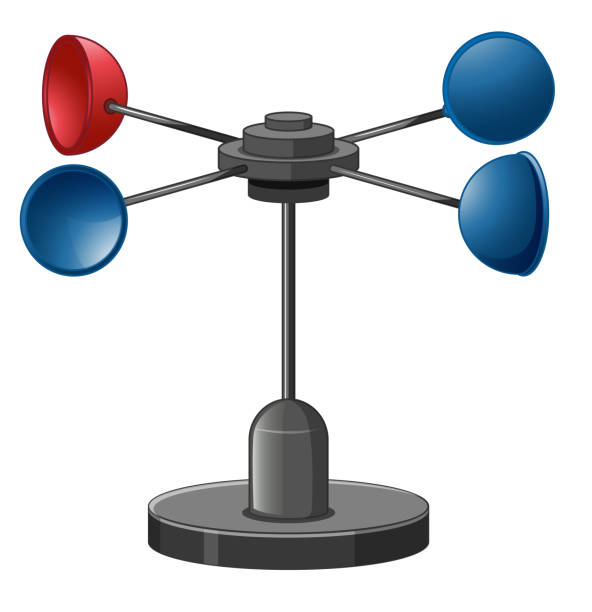How an Anemometer Can Improve Your Weather Surveillance System
How an Anemometer Can Improve Your Weather Surveillance System
Blog Article
Exploring the Functions and Benefits of Anemometers for Climate Enthusiasts and Professionals
From mug anemometers to sonic anemometers, each type brings its distinct collection of benefits and applications, losing light on different aspects of atmospheric problems. As we dive right into the functions and advantages of anemometers, a much deeper understanding emerges not just of dominating weather condition phenomena yet also of the wider implications for fields like wind power production and ecological research study.
Significance of Anemometers in Climate Tracking
Anemometers play a critical duty in weather tracking by supplying exact dimensions of wind speed, aiding in forecasting and understanding weather condition patterns. These tools, varying from conventional cup anemometers to modern ultrasonic anemometers, are vital for meteorologists, scientists, and weather condition fanatics alike.

Types of Anemometers and Their Applications
With the essential function anemometers play in weather condition surveillance and projecting, comprehending the various sorts of these tools and their applications becomes important for specialists and enthusiasts in the field. The most usual kinds of anemometers include cup anemometers, vane anemometers, hot-wire anemometers, and ultrasonic anemometers. Cup anemometers include three or 4 mugs installed on horizontal arms that revolve with the wind, determining its speed. Vane anemometers, on the other hand, make use of an easily rotating vane to align with the wind direction, providing both wind rate and instructions dimensions. Hot-wire anemometers operate based upon the principle of convective warmth transfer, where the cooling impact of the air circulation is measured to determine wind rate. Ultrasonic anemometers utilize ultrasonic sound waves to determine wind speed and instructions accurately.
Cup anemometers are ideal and robust for general weather condition surveillance, while vane anemometers are favored for directional measurements. Ultrasonic anemometers are non-intrusive and provide high precision, often utilized in research study and specialized climate tracking applications.
Benefits of Making Use Of Anemometers in Projecting
In weather forecasting, the utilization of anemometers offers vital benefits for boosting the precision of weather condition forecasting. Anemometers measure wind rate and instructions, giving crucial data for forecasting climate patterns. By integrating wind data into projecting designs, meteorologists can much better comprehend the activity of weather systems, expect modifications in weather, and concern much more precise projections.
In addition, anemometers play a crucial function in evaluating prospective weather condition hazards. Keeping track of wind rates assists forecasters predict extreme weather condition events such as typhoons, tornadoes, and winter tornados with better accuracy. This early warning system makes it possible for authorities to provide prompt informs and implement essential security procedures, minimizing the risks to life and residential property.
Furthermore, anemometers aid in optimizing renewable resource manufacturing. By assessing wind patterns, meteorologists can determine ideal locations for wind farms and forecast energy outcome, adding to the reliable generation of wind power.

Anemometers in Wind Energy Manufacturing
Offered the crucial function anemometers play in giving accurate wind data for weather condition projecting and threat assessment, their importance prolongs to the world of wind power manufacturing. Anemometers are essential instruments in the field of wind energy, where the measurement of wind speed and direction is important for identifying the usefulness and performance of wind generator installments. By accurately measuring wind speeds at differing elevations, anemometers assist maximize the positioning and layout of wind generators to make the most of energy output.
In wind farms, anemometers are purposefully placed to collect real-time wind data that is used to assess the potential energy manufacturing of a website. This information contributes in establishing the financial stability of wind power jobs and in forecasting energy generation to make certain grid security. Furthermore, anemometers aid in checking wind problems to enhance turbine performance, avoid damage from high winds, and ensure the safety of employees functioning in the location of wind turbines.
Enhancing Weather Understanding With Anemometers

Anemometers play a vital duty in boosting our understanding of microclimates. These local climate condition can differ dramatically from more comprehensive local projections, making it crucial to have exact information read here for certain areas. anemometer. By strategically positioning anemometers in numerous areas, researchers can gather comprehensive information on just how wind acts in different terrains, urban settings, or bodies of water
Additionally, anemometers add to improving weather projecting designs by offering real-time data on wind actions. This info is particularly valuable for forecasting extreme weather condition occasions, maximizing farming methods, and sustaining markets like aviation and maritime navigating. Generally, anemometers are vital instruments that allow us to dive much deeper right into the complexities of climate systems, ultimately bring about even more exact predictions and better-informed choices.
Verdict
In verdict, anemometers play an essential function in climate surveillance and projecting by gauging wind speed and direction. Anemometers additionally have applications in wind energy manufacturing, further highlighting their value in both weather forecasting and eco-friendly energy industries.
From cup anemometers to sonic anemometers, each kind brings its one-of-a-kind collection of applications and advantages, shedding light on numerous aspects my explanation of atmospheric conditions. These tools, ranging from typical mug anemometers to modern-day ultrasonic anemometers, are vital for meteorologists, scientists, and climate fanatics alike. The most usual kinds of anemometers consist of cup anemometers, vane anemometers, hot-wire anemometers, and ultrasonic anemometers. Cup anemometers are robust and appropriate for general weather monitoring, while vane anemometers are favored for directional measurements. Anemometers are necessary tools in the area of wind power, where the measurement of wind speed and direction is essential for figuring out the expediency and performance of wind turbine installments.
Report this page